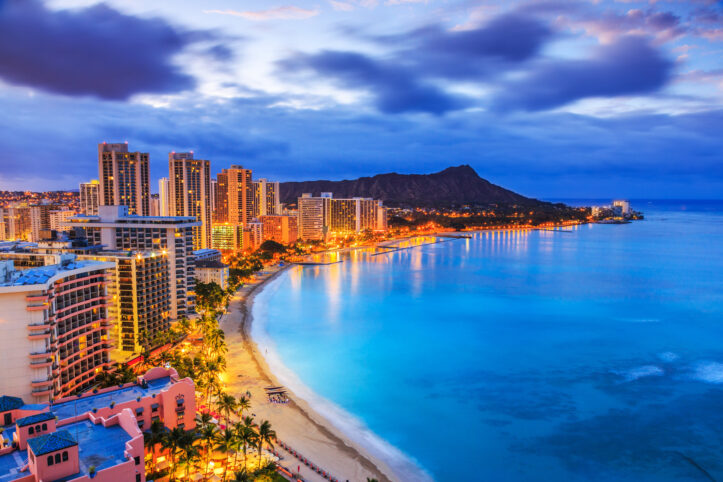
Hawaii’s New Law Prioritizes Local Housing Over Short-Term Rentals
In early May, Hawaii Governor Josh Green signed a groundbreaking law that grants counties more control over short-term rentals, aiming to prioritize local community needs over vacation properties.
Senate Bill 2919 addresses Hawaii’s severe housing crisis, which prompted an emergency proclamation in 2023 and led many locals to move to the continental US. The situation worsened after the August 8 fires in Lahaina, which destroyed over 2,500 buildings and displaced nearly 13,000 people. As of June 10, more than 200 families, representing 581 individuals, were still living in hotels.
Following the bill’s signing, officials on Maui, Oahu, and Hawaii Island moved quickly to implement changes. On Maui, Mayor Richard Bissen proposed phasing out thousands of short-term rentals listed on the “Minatoya List.” This list, named after the late county attorney Richard Minatoya, includes rentals built before 1989 in apartment districts, which current laws now restrict to hotel zones. Bissen’s proposal aims to convert these properties into long-term housing.
Data from the Council for Native Hawaiian Advancement reveals that 7,160 properties are on the list, with 96% in West and South Maui. Most are owned by out-of-state individuals, with Californians owning 36.1%, and Hawaii residents owning just 14.9%. Only 6% of Minatoya rental owners have offered long-term leases to fire survivors despite incentives like a property tax exemption.
“These mostly off-island owners have turned our apartment-zoned housing into investments, displacing working-class families long before the fire,” said Paele Kiakona of Lahaina Strong, a group advocating for long-term housing. Lahaina Strong occupied Kaanapali Beach, the heart of West Maui’s tourism, for 175 days until SB 2919 passed.
Bissen’s proposal must be reviewed by three planning commissions representing Maui, Molokai, and Lanai. Their recommendations will form a bill for the County Council’s Housing and Land Use Committee before going to the nine-member council for a final vote. The first hearing on June 25 included nearly 10 hours of emotional testimony from both sides.
Matt Jachowski, a data consultant with the Council for Native Hawaiian Advancement, countered opponents’ claims that the Minatoya List units were unsuitable for long-term housing due to their small size. He cited FEMA and CNHA data showing that one- and two-bedroom units were the most requested by displaced families. Jachowski also presented a UHERO analysis suggesting the proposal could increase long-term housing by 13% and help lower housing costs by converting vacation rentals to residential properties.
“Maui’s housing ecosystem is broken and it’s breaking our residents, with much of our housing dedicated to nonresidents,” Jachowski said. “Our residents form the fabric of the community and make this island special.”
The hearing will continue on July 23 after being delayed due to a lack of quorum. The commission aims to make a recommendation on the proposal by the end of the year. If approved, West Maui units will need to cease operations by July 1, 2025, with the rest of Maui following by July 1, 2026.
Opponents worry about the economic impact, including job losses, reduced property tax revenue, and fewer tourist dollars. The Maui County Council has allocated $300,000 to study these effects. State data shows that phasing out Minatoya List rentals would affect only 15% of the visitor inventory, leaving many hotels and legal rentals available. However, the loss of these units would significantly reduce county revenue. The Maui Vacation Rental Association estimates a $246.3 million property tax revenue from short-term rentals for fiscal year 2025, making up 42% of the total property tax revenue.
UHERO suggests an alternative could be increasing property taxes to encourage owners to switch to long-term rentals rather than banning the units.
Currently, there’s no guarantee that new long-term housing will be available to locals. Attorney Lance Collins, who works with Lahaina fire survivors, stated that a rent control ordinance might be necessary to prevent runaway rent prices. Collins also expressed concern that new long-term rentals might be rented by remote workers, not locals.
Other islands are also taking action. Honolulu Mayor Richard Blangiardi said the city would aggressively enforce new laws limiting short-term rentals to a minimum of 180 days. The City Council approved raising property taxes on short-term rentals and improved detection of illegal rentals. Hawaii Island’s County Council is reviewing bills that would redefine short-term rentals as Transient Accommodation Rentals (TAR) with stricter regulations for non-owner-occupied properties.
These changes aim to address Hawaii’s housing crisis by prioritizing local residents’ needs over vacation rentals, despite concerns about potential economic impacts.
The changes could also affect businesses in Hawaii. Local enterprises, especially those catering to tourists, might face decreased patronage if fewer vacation rentals are available. Restaurants, shops, and tour operators, heavily reliant on tourist dollars, could see a drop in revenue. However, supporters of the bill argue that a focus on long-term residents might stimulate different sectors of the economy, such as a Honolulu Defective Products Lawyer, creating a more sustainable local market.


